The most common way of spelling the phoneme or sound IGH, is with an IGH. This is usually taught in Reception Class. You’ll usually find this in the middle of words, like light, sight and night and longer words like bright, fright and flight.

The most obvious alternative spelling to IGH is IE. This alternative to IGH is usually found at the end of words.There are not many words with an IE ending, but some examples could include pie, tie, lie and die.

Try to avoid plurals, like tries. This changes the original, or root word. Also avoid past tense words when you’re introducing the rule. Words like lied, where the ending disproves the rule. These just confuse the children until they are secure in the IGH / IE rule.
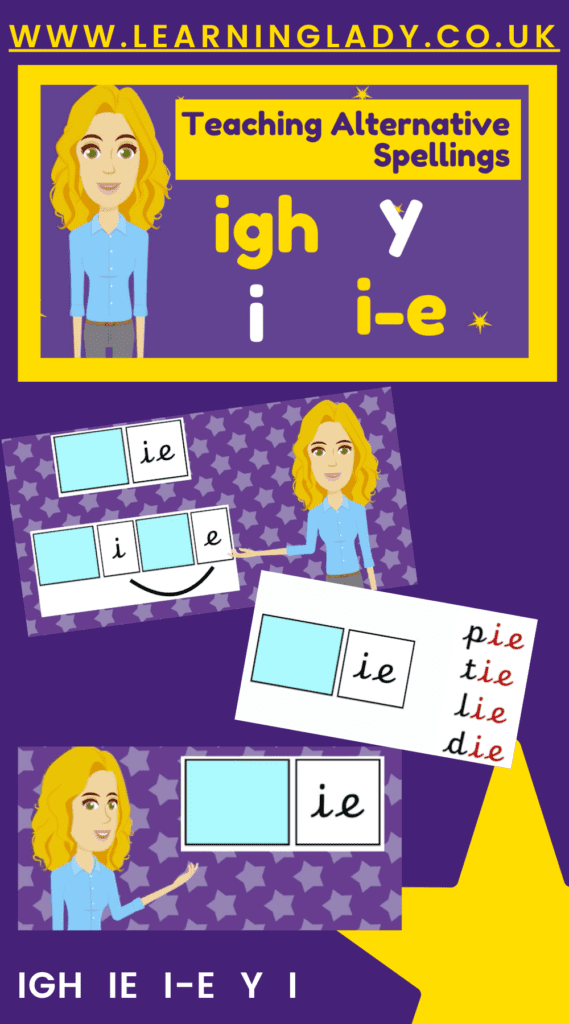
Once the children know that the IE together make the IGH sound or phoneme, it’s easy to teach the next alternative for the IE sound. This spelling is known as a split digraph I-E. This is when the IE make the IGH sound, but they are split, with one letter squeezed in the middle. You’ll recognise the I-E split digraph in words like kite, line, shine, wide and even longer words like inside.

Another common way of spelling the IGH sound or phoneme is by using the letter Y at the end of words. Y is used to make the IGH sound or phoneme at the end of words, which are made up of one syllable. The children will need to have a basic understanding of syllables as beats in a word before they master this rule. Words like by, try, shy, cry, dry fly, and sky would be really good examples of this rule.
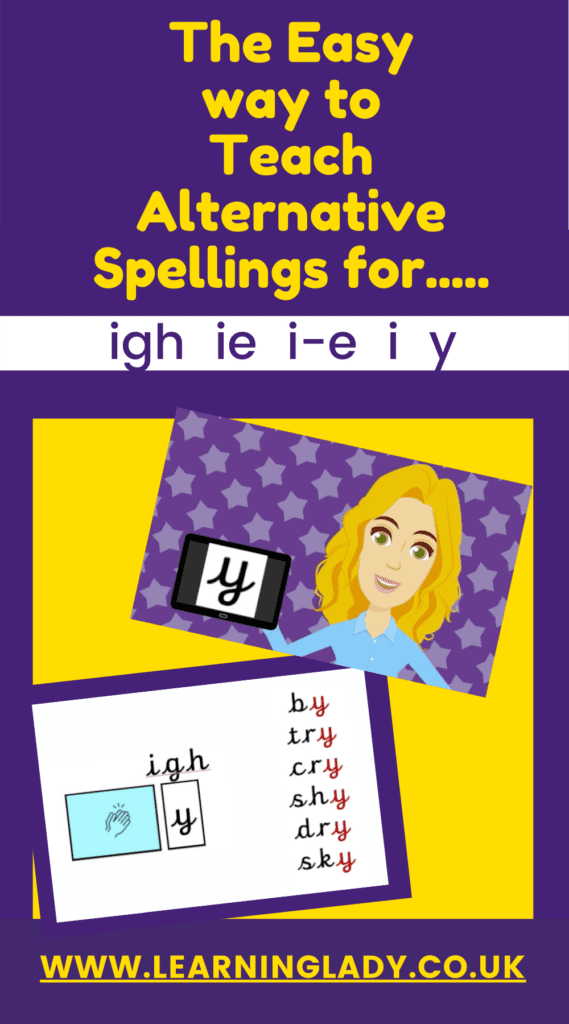
Avoid words like goodbye when you introduce this rule, as it is an exception. Also avoid two syllable words like very or happy, where the Y makes an EE sound. This will reduce the chances of the children being really confused.
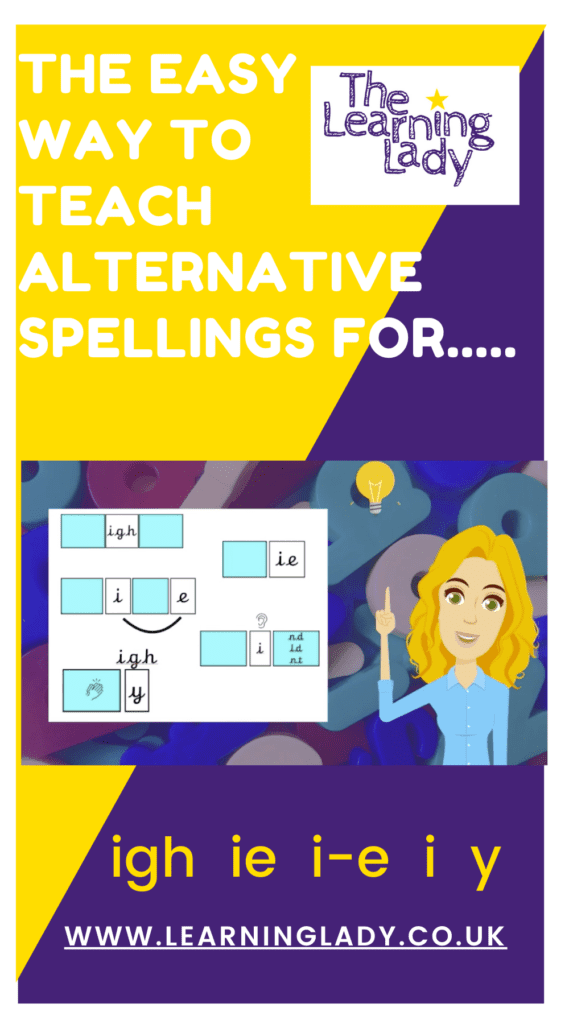
The final rule for teaching the IGH phoneme or sound is to know when to pronounce the letter I by its sound, or by its letter name. The children will need to have a basic understanding of vowels and consonants before they learn this rule.
I on its own becomes IGH, rather than i, in words followed by two consonants, usually ND LD or NT. For example, words like kind, find, bling, child, mild and pint.
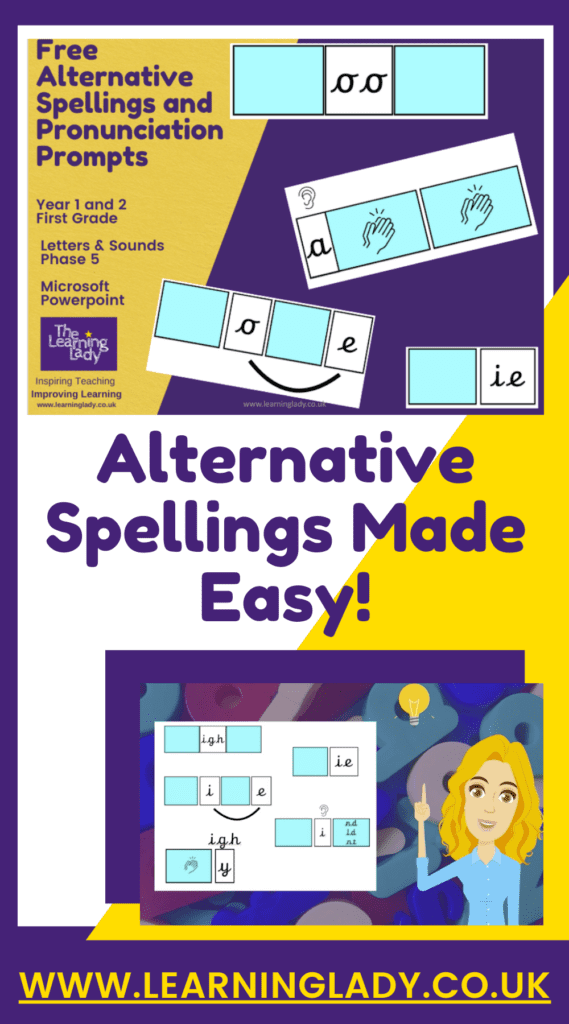
Mint would be a really good exception to avoid at this stage.
Learning Lady Top Tip
Make sure that the children can hear where different sounds (phonemes) are in words, and that they have a basic understanding of what syllables, vowels, and consonants are, before you begin to teach these different spelling alternatives. Otherwise, they’ll be trying to remember too many new things all in one go and won’t remember anything!
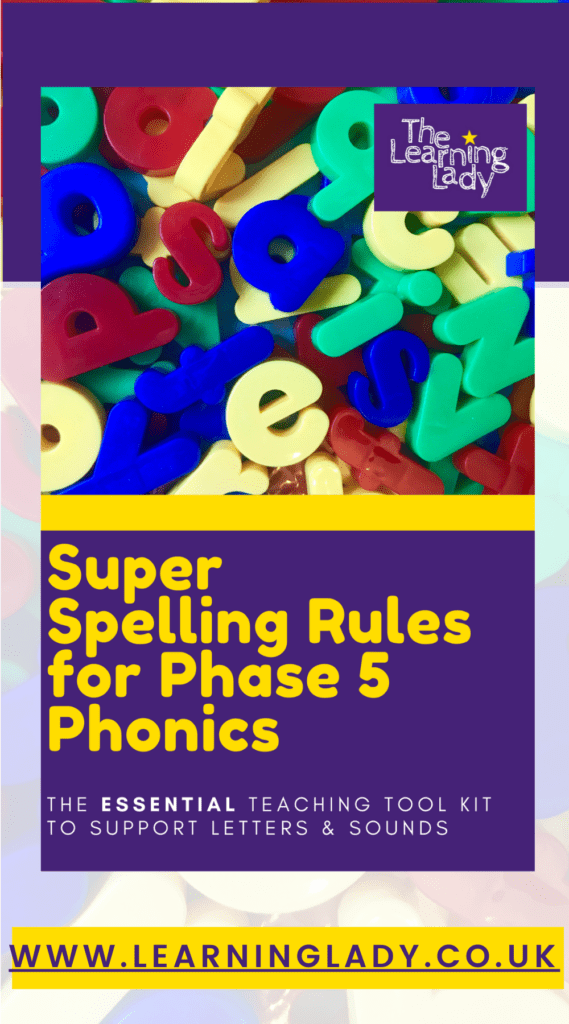
For all of the spelling rules and alternative pronunciations of sounds you’ll need to teach Letters and Sounds Phase 5 SPECTACULARLY WELL, Download my FREE PDF Super Spelling Rules guide now. It includes:
Easy, plain English, explanations of all of the rules you’ll need
Lists of words which prove each rule
Exceptions to avoid
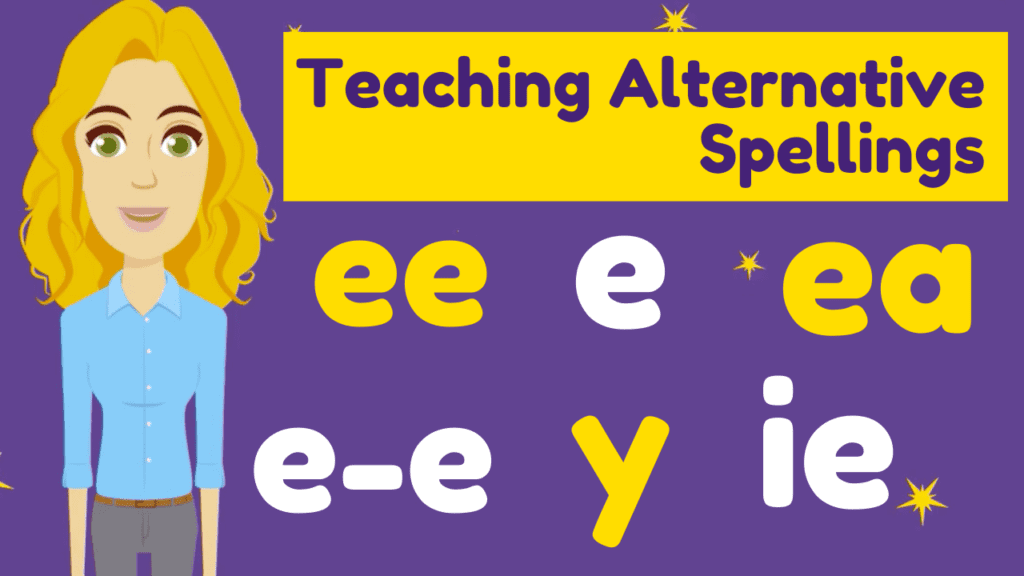
Don’t forget there are more spelling rules and alternative pronunciations to master when you’re explaining Phase 5 Phonics.
Check out these rules to teach the most common spelling choices in Phase 5 SPECTACULARLY WELL!
Alternative spellings and rules to teach the AI sound
Spelling alternatives for the EA phonics sound Phase 5
Alternative spellings for IGH phonics in Phase 5
Alternative spellings for IR words in phonics Phase 5
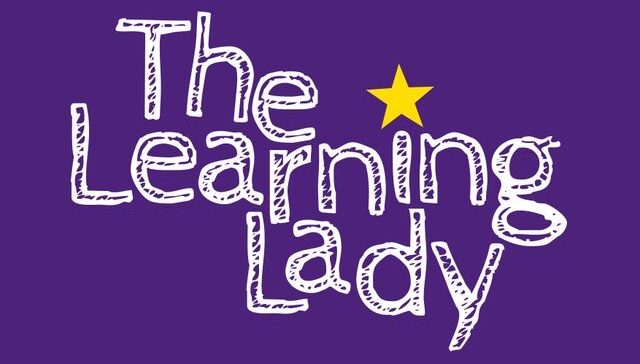
How can I download the super spelling rules PDF? None of the links work within the alternative spelling rules pages for that specific resource mentioned. I would love all of Phase 5 in a document if it exists.
I apologise for the broken link. Here is the link that works https://view.flodesk.com/pages/61f437bd60ada4164ea6fb33